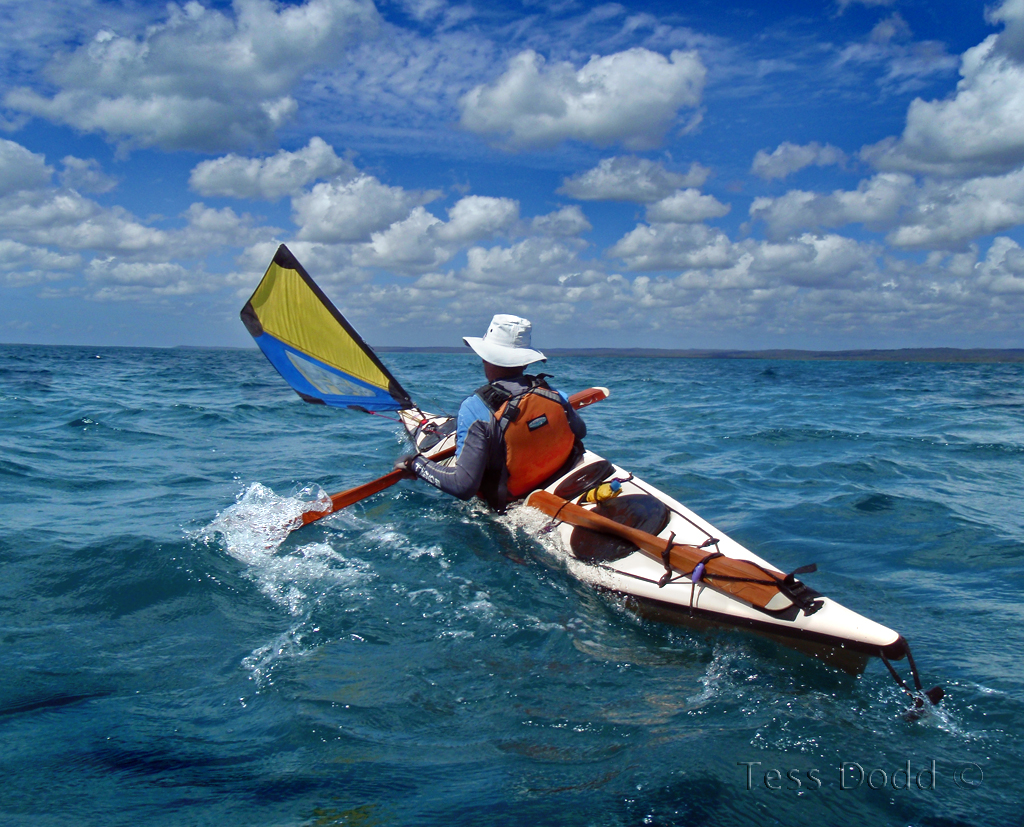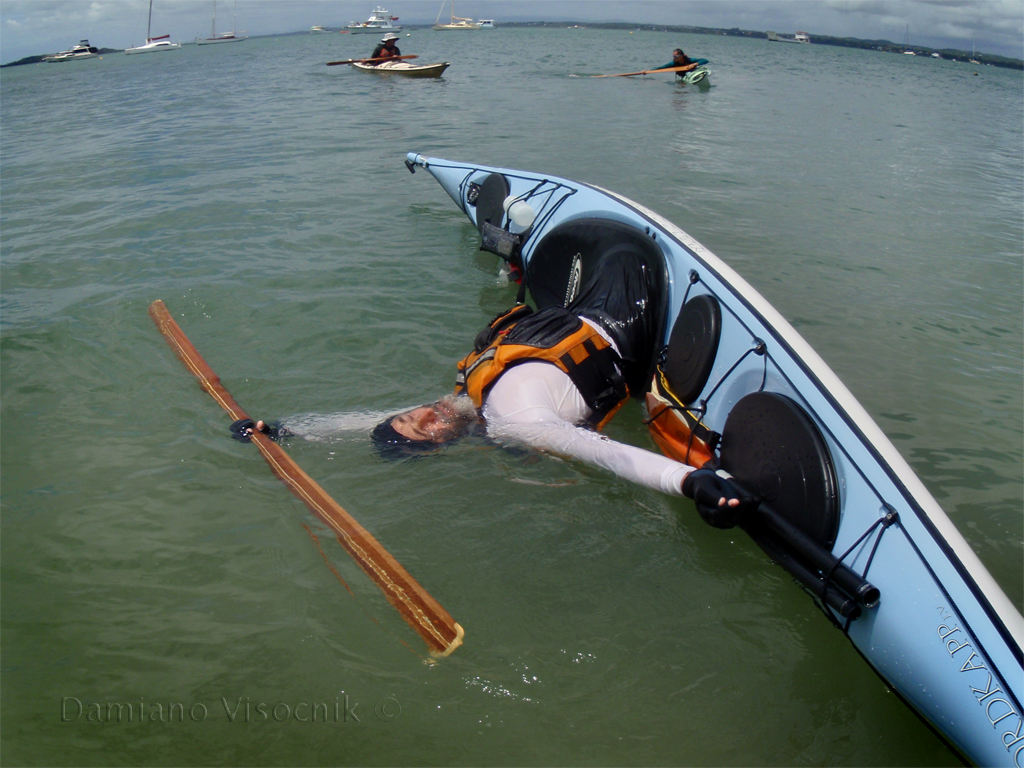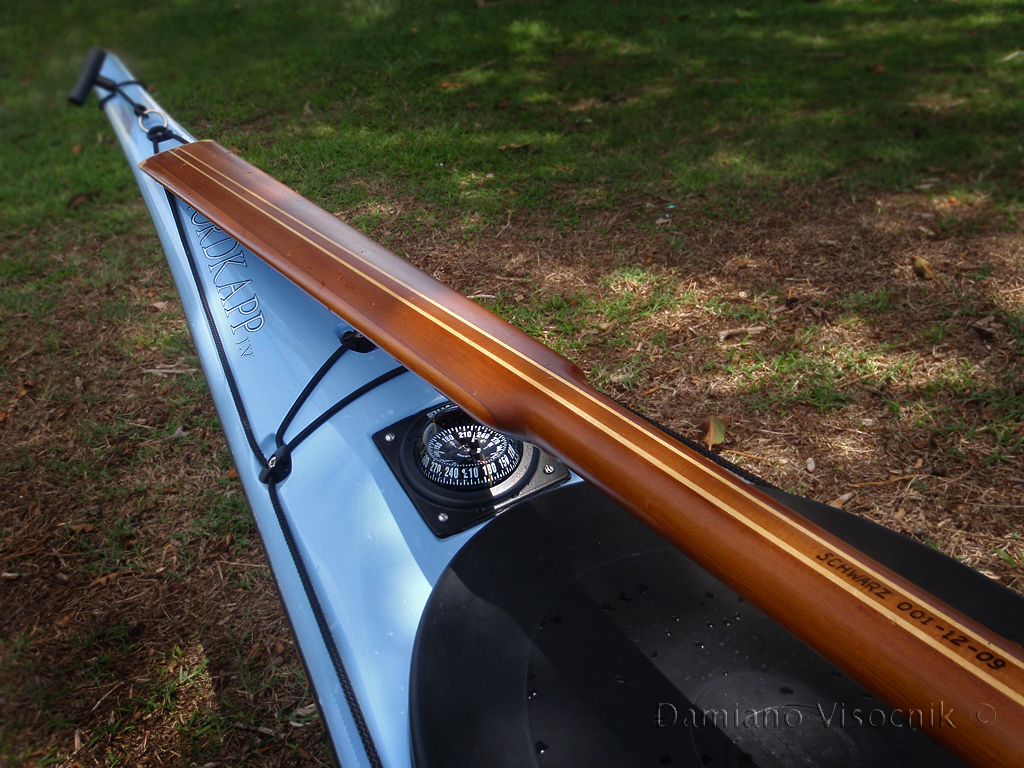Valley has recently changed the seat in their sea kayaks (2010). The previous kayaks were shipped with the above seat.Some paddlers found a problem with the shape of the seat and the configuration of the back band. The seat shape did not suit a lot of kayakers that would spend long time on the water and the backband would hinder some rescues.
The previous kayaks were shipped with the above seat.Some paddlers found a problem with the shape of the seat and the configuration of the back band. The seat shape did not suit a lot of kayakers that would spend long time on the water and the backband would hinder some rescues. As shipped from factory the back band would tend to fold down under the paddlers bottom when a rescue (assisted or self) is performed.Some kayakers have modified the retention system to make the back band more secure and prevent dislogment and nuisance when reentering the cockpit.But the more important concern is that the shape of the seat seems to cause severe rubbing with some users.The "slope" of the pan on the rear is too gentle and when the kayak is paddled efficiently with pressure on the footpegs and consequently the body of the paddlers pushed back, the seat would rub the tail bone.On long crossing some kayakers would rub all the skin off of the end of the spine area and consequently be in pain.Comparing the Valley seat to other sea kayaks' seat I notice the pronounced difference and tried to rectify the problem.The Valley seat seems to be made from polyethylene and I tried to use a heat gun and reshape some of the seat and create a better pan.Unfortunately such solution only alleviated the problem but did not really fix it.A new seat pan had to be made.
As shipped from factory the back band would tend to fold down under the paddlers bottom when a rescue (assisted or self) is performed.Some kayakers have modified the retention system to make the back band more secure and prevent dislogment and nuisance when reentering the cockpit.But the more important concern is that the shape of the seat seems to cause severe rubbing with some users.The "slope" of the pan on the rear is too gentle and when the kayak is paddled efficiently with pressure on the footpegs and consequently the body of the paddlers pushed back, the seat would rub the tail bone.On long crossing some kayakers would rub all the skin off of the end of the spine area and consequently be in pain.Comparing the Valley seat to other sea kayaks' seat I notice the pronounced difference and tried to rectify the problem.The Valley seat seems to be made from polyethylene and I tried to use a heat gun and reshape some of the seat and create a better pan.Unfortunately such solution only alleviated the problem but did not really fix it.A new seat pan had to be made. I was lucky to borrow Greg Schwarz's mold that he has made for replacing an ill shaped seat on a different kayak.In a conventional lay up of double bias glass and 4oz cloth, I used epoxy as resin.In some areas of high stress I used additional layers of carbon/Kevlar cloth to reinforce possible weak spots (something I have learned by repairing other manufacturer's seats).A hung seat sees a lot of stress in the "bracket" area.I did not want to carve a simple but effective closed cell (minicell) foam seat because it prevents the flow of water to the electric bilge pump located behind the seat.Foam seats are great: easy to fabricate, very comfortable but don't allow water flow to the rear bulkhead.
I was lucky to borrow Greg Schwarz's mold that he has made for replacing an ill shaped seat on a different kayak.In a conventional lay up of double bias glass and 4oz cloth, I used epoxy as resin.In some areas of high stress I used additional layers of carbon/Kevlar cloth to reinforce possible weak spots (something I have learned by repairing other manufacturer's seats).A hung seat sees a lot of stress in the "bracket" area.I did not want to carve a simple but effective closed cell (minicell) foam seat because it prevents the flow of water to the electric bilge pump located behind the seat.Foam seats are great: easy to fabricate, very comfortable but don't allow water flow to the rear bulkhead.
Greg's mold allows for a channel to let water flow though the middle, under the seat.
Visible in the image above is the front of the new seat installed in a Norkdkapp LV. Expanding polyurethane foam was used for supporting the front of the pan.
The new seat has a much longer pan and offers outstanding thigh support.
This is the second seat that I have fabricate from that mold and to date is the best sea kayak seat for me. While some other seats would offer reasonable comfort others would give me the dreaded "dead legs" on long outings.
This seat however addresses the compression of the sciatica nerve problem and eliminates discomfort that some seats bring.
seat installed in Nordkapp LV, rear bulkhead with electric bilge pump
I decide to remove the back band all together and go for a foam block instead.
A well shaped foam block offers support where needed but eliminates the problem of back bands falling under the paddlers bum in a rescue.
Fabricating a foam back block required the lamination of 4 pieces of coarse closed cell foam (type of foam used for industrial packaging) and carving the centre section to allow for the bilge pump.
foam sections laminated with contact adhesive _ underside of foam back block 

The back block is shaped to the contour of the rear bulkhead and fits snugly behind the seat.
To prevent accidental dislogment I used a bungee retention cord (with olive) threaded through the block.
The section of the back block that contacts the body has a softer last layer of quality minicell.
Shown here before final the layer of neoprene that will cover the block.
The new seat installed.
I used a simple anodized aluminium bracket fashioned from a 2" L section.
Stainless steel nuts and bolts to secure the seat to the bracket.















.jpg)


.jpg)
.jpg)
.jpg)
.jpg)


